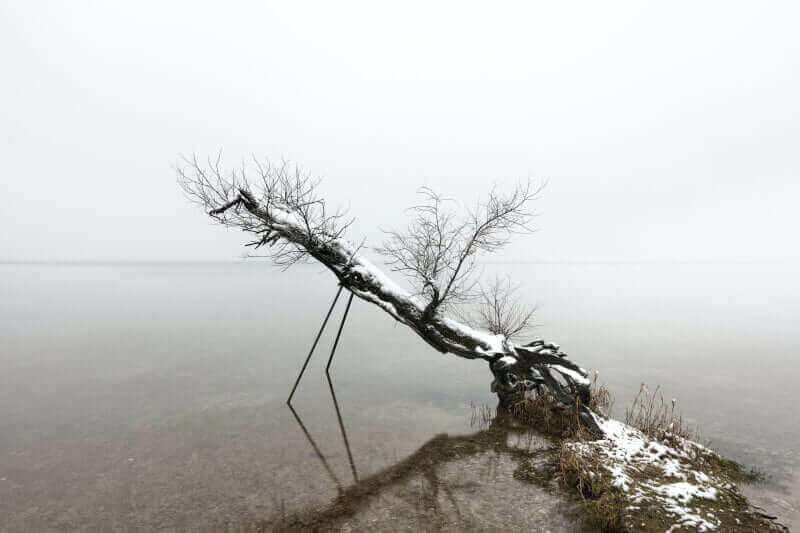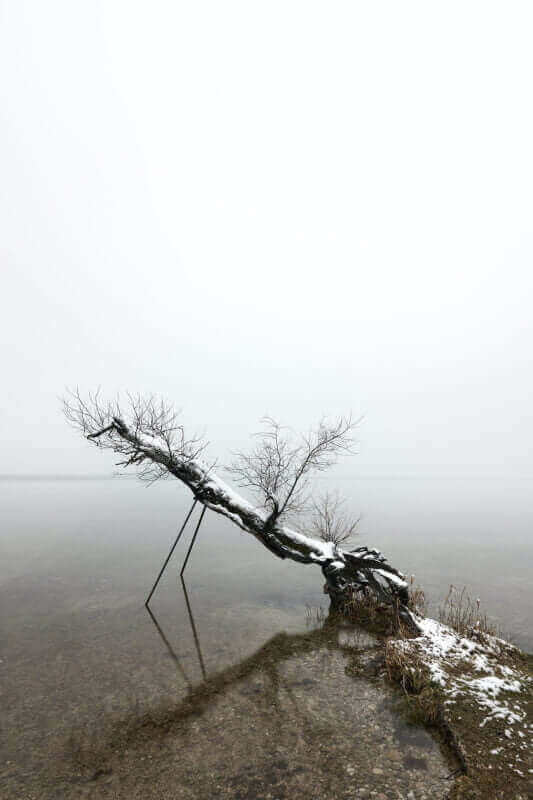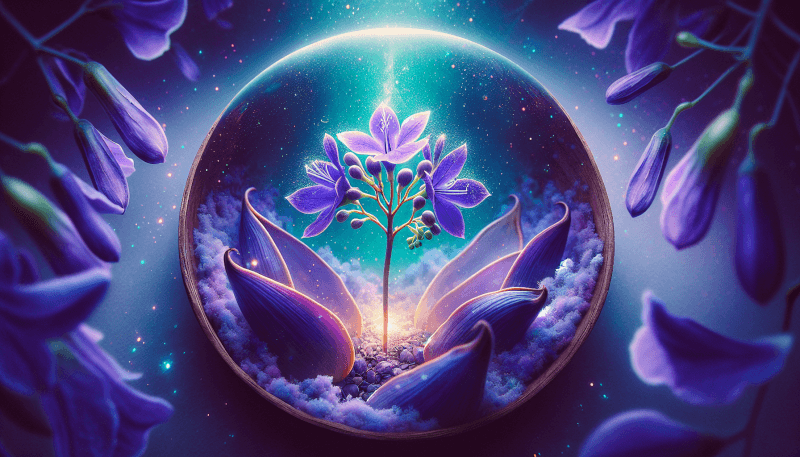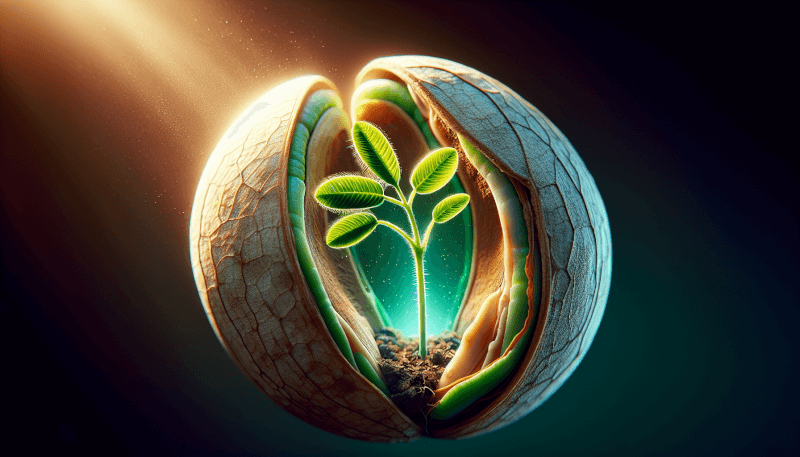👋 Click the mic button to talk to Alfred, the Todd's Seeds Gardening/Sprouting Expert – Feel free to ask him anything!
Ask Virtual Todd Anything - Click the Mic
Imagine the delight of seeing a majestic jacaranda tree in full bloom, with its vibrant purple flowers cascading over the branches. Now, picture yourself being able to grow your very own jacaranda tree from scratch. In this article, we will explore the fascinating process of sprouting jacaranda seeds and provide you with all the necessary information and tips to bring this stunning tree to life in your own backyard. Let’s embark on this thrilling journey of nurturing and watching these tiny seeds transform into a captivating spectacle of nature.

Choosing Jacaranda Seeds for Sprouting
When it comes to sprouting Jacaranda seeds, choosing high-quality seeds is essential for the best chances of success. You can either purchase Jacaranda seeds from a reputable seed supplier or collect them yourself from an existing Jacaranda tree.
Purchasing Jacaranda Seeds
If you decide to purchase Jacaranda seeds, make sure to find a reliable seed supplier. Look for suppliers that specialize in rare or exotic seeds, as they are more likely to have Jacaranda seeds available. Read reviews and check for any certifications or guarantees of seed quality.
Collecting Jacaranda Seeds
Collecting Jacaranda seeds directly from an existing Jacaranda tree can be a rewarding experience. Wait until the tree has finished blooming and the seed pods have developed. The seed pods will turn brown or tan when they are ripe and ready to be collected.
Gently twist the seed pods to release the seeds. Be careful not to damage the seeds in the process. Collect as many seeds as you need, keeping in mind that not all seeds will sprout successfully.
Preparing the Jacaranda Seeds for Sprouting
Preparing Jacaranda seeds before planting is crucial to give them the best chance of germinating successfully. There are several steps involved in preparing the seeds, including cleaning, scarifying, and soaking.
Cleaning the Jacaranda Seeds
Before you begin the germination process, it’s important to ensure that the Jacaranda seeds are clean. Remove any debris or dirt from the seeds by gently rinsing them with clean water. This will help prevent any potential contamination or mold growth during germination.
Scarifying the Jacaranda Seeds
Jacaranda seeds have a hard outer shell that can sometimes hinder germination. To assist with the germination process, you can scarify the seeds. Scarification is the process of breaking or weakening the seed coat to allow moisture to penetrate and promote sprouting.
To scarify Jacaranda seeds, you can gently file or nick the outer shell using a small knife or sandpaper. Be careful not to damage the inner seed while doing this. Alternatively, you can also soak the seeds in warm water overnight to soften the seed coat.
Soaking the Jacaranda Seeds
After scarifying the Jacaranda seeds, it’s recommended to soak them in water for a period of time. Soaking helps to further soften the seed coat and kickstart the germination process.
Place the scarified seeds in a container with warm water and let them soak for 24 to 48 hours. Make sure that the water is changed regularly to prevent any bacteria or fungi from developing. Once the soaking period is complete, the seeds are ready for germination.

Choosing the Right Soil and Containers
Choosing the appropriate soil and containers for your Jacaranda seedlings is vital for their health and growth. Providing them with the right environment will encourage strong root development and overall plant vigor.
Selecting Well-Draining Soil
Jacaranda seedlings require well-draining soil to prevent waterlogging and root rot. A mix of equal parts peat moss, perlite, and vermiculite is an excellent choice for creating a well-draining soil mixture. This mixture will provide adequate aeration and drainage for the young roots.
Make sure to avoid heavy soils or those that retain excessive moisture as this can lead to poor root development and the potential for fungal infections.
Choosing the Appropriate Containers
Choosing the right containers for your Jacaranda seedlings is an important step in their growth journey. Opt for containers that have drainage holes at the bottom to prevent waterlogging. Plastic pots or seedling trays are suitable choices for starting Jacaranda seeds.
Ensure the containers are deep enough to accommodate the developing root system. As the seedlings grow, you may need to transplant them into larger containers to allow for unrestricted root growth.
Germinating Jacaranda Seeds
Germinating Jacaranda seeds can be done through various methods. The two most common methods are the water germination method and the paper towel germination method. Both techniques are effective and have their own advantages.
The Water Germination Method
To germinate Jacaranda seeds using the water method, fill a glass or a container with warm water. Place the seeds in the water and let them soak for 24 to 48 hours. During this time, monitor the water and change it regularly to prevent any mold or bacterial growth.
After soaking, transfer the seeds to a damp paper towel or directly onto the prepared soil. Keep the towel or soil consistently moist and wait for the seeds to sprout. Once the seeds have germinated, gently transfer them to individual containers.
The Paper Towel Germination Method
The paper towel germination method is another effective way to sprout Jacaranda seeds. Moisten a paper towel with water and wring out any excess moisture. Place the seeds on the damp paper towel and fold it over to cover the seeds completely.
Put the folded paper towel with the seeds inside a sealed plastic bag or container to create a warm and humid environment. Keep the bag or container in a warm spot, such as near a window or under a grow light.
Check the seeds regularly for signs of germination, and once sprouted, carefully transfer them to the prepared containers or soil.

Providing Optimal Growing Conditions
After germinating Jacaranda seeds and transferring them to containers, it’s crucial to provide them with optimal growing conditions to ensure healthy growth and development. Consider factors such as temperature, sunlight, moisture, humidity levels, and fertilization.
Temperature and Sunlight Requirements
Jacaranda seedlings thrive in warm temperatures between 60-85°F (15-30°C). Place the containers in a warm location where they can receive indirect sunlight or partial shade. Avoid exposing the seedlings to intense heat or direct sunlight, as it could scorch their tender leaves.
Moisture and Humidity Levels
Keep the soil evenly moist, but not soggy, during the early stages of growth. Jacaranda seedlings require consistent moisture to encourage healthy root development. Use a spray bottle to mist the seedlings and maintain a slightly humid environment.
Be careful not to overwater the seedlings, as excessive moisture can lead to root rot and fungal diseases. Allow the top inch of soil to dry out before watering again.
Fertilizing the Seedlings
Initially, Jacaranda seedlings do not require frequent fertilization, as the nutrients in the potting soil should be sufficient for their early growth. However, once the seedlings develop their first true leaves, you can begin fertilizing them.
Choose a balanced, water-soluble fertilizer and apply it according to the package instructions. Avoid over-fertilization, as it can cause burn or nutrient imbalance. Gradually increase the frequency of fertilization as the seedlings grow.
Transplanting Jacaranda Seedlings
As Jacaranda seedlings grow, they will need to be transplanted into larger containers or ultimately into their permanent location. This process should be done gradually to minimize shock and ensure successful establishment.
Waiting for the Seedlings to Grow
Wait until the Jacaranda seedlings have developed a strong and robust root system before considering transplants. The seedlings should have multiple sets of leaves and be at least 6-8 inches tall. This usually takes around 2-3 months after germination.
Choosing the Right Spot for Transplanting
When selecting a permanent planting location for Jacaranda seedlings, choose a spot that provides full sun exposure and has well-draining soil. Ensure that the area has enough space for the tree to grow to its mature size, as Jacaranda trees can reach up to 50 feet in height.
Transplanting the Seedlings
To transplant the Jacaranda seedlings, carefully remove them from their current containers, being cautious not to disturb the delicate roots. Dig a hole in the new location that is slightly larger than the root ball of the seedling. Gently place the seedling in the hole and backfill with soil, firming it gently around the roots.
Water the seedling immediately after transplanting to help settle the soil and provide moisture to the newly disturbed root system. Mulching around the base of the seedling can help retain moisture and suppress weed growth.

Caring for Jacaranda Seedlings
Proper care is essential to ensure the healthy growth and development of Jacaranda seedlings. Pay attention to watering, pruning, and protection against pests and diseases.
Watering Jacaranda Seedlings
Water the seedlings regularly to maintain evenly moist soil. Carry out deep, thorough watering sessions rather than frequent shallow watering. This encourages deep root growth and helps the seedlings withstand periods of drought.
Monitor the moisture levels in the soil and adjust watering accordingly. Be mindful not to overwater, as it can lead to root rot and other moisture-related issues.
Pruning Jacaranda Seedlings
Pruning is an important aspect of Jacaranda seedling care, and it helps shape the young tree’s growth. Regularly inspect the seedlings for any damaged, diseased, or crossing branches, and prune them off using clean and sharp pruning shears.
Pruning in the early stages of growth helps establish an open and well-structured canopy. It also encourages air circulation and sunlight penetration, reducing the risk of fungal infections and promoting overall tree health.
Protecting Seedlings from Pests and Diseases
Jacaranda seedlings are susceptible to certain pests and diseases, so it’s essential to monitor them regularly for any signs of trouble. Common pests that may affect Jacaranda include aphids, mealybugs, and scales.
If you notice pests, consider using insecticidal soaps or natural remedies to control their population. Additionally, keep an eye out for any signs of fungal diseases like powdery mildew or leaf spot. Proper airflow, avoiding overhead watering, and applying appropriate fungicides can help prevent and manage these diseases.
Managing Jacaranda Seedlings’ Growth
As Jacaranda seedlings continue to grow, they may require additional support or maintenance to ensure healthy and upright growth.
Supporting the Seedlings with Stakes
In windy areas or if your Jacaranda seedlings exhibit weak or floppy growth, providing support with stakes can be beneficial. Use sturdy stakes and soft ties to gently secure the seedlings to prevent breakage or damage.
Controlling Growth with Pinching
Pinching is a horticultural technique used to encourage branching and compact growth. By pinching off the tips of young shoots, you can promote bushier growth and prevent the seedling from becoming too tall and lanky.
Pinching should be done during the active growing season, and it’s important to use clean, sterilized pruning shears to prevent the spread of diseases.

Troubleshooting Common Issues
While taking care of Jacaranda seedlings, you may encounter some common issues that require attention and intervention.
Damping Off Disease
Damping off is a fungal disease that affects young seedlings and can cause them to wilt, collapse, and eventually die. To prevent damping off, ensure adequate air circulation, avoid overwatering, and use a sterile seed-starting mix. If seedlings are affected, remove and destroy the infected plants to prevent further spread.
Yellowing Leaves
Yellowing leaves in Jacaranda seedlings can be a sign of nutrient deficiencies, overwatering, or improper lighting conditions. Check the soil moisture levels, adjust watering if necessary, and ensure the seedlings receive sufficient sunlight. Consider providing a balanced fertilizer to address nutrient deficiencies.
Root Rot
Root rot is a common problem caused by overly wet or poorly drained soil. It can cause the roots to decay, leading to stunted growth, wilting, and eventual death of the seedlings. To prevent root rot, ensure proper drainage, and avoid overwatering. If root rot is detected, take immediate measures such as modifying the watering routine and improving soil drainage.
Celebrating Successful Jacaranda Seedlings
After all your hard work, watching your Jacaranda seedlings thrive and eventually bloom is a joyous experience. Here are some ways to celebrate the successful growth of your seedlings.
Enjoying the Beauty of Blooming
When your Jacaranda seedlings mature and start to bloom, take a moment to appreciate their stunning violet-blue flowers. The vibrant colors and delicate blossoms create a breathtaking display that will surely impress all who see it.
Sharing Your Success with Others
Share the joy of successful Jacaranda seedling growth by sharing your experiences with friends, family, and fellow gardening enthusiasts. Talk about the steps you took to nurture and care for the seedlings, and inspire others to embark on their own gardening journeys.
Consider hosting a garden tour or inviting loved ones to witness the beauty of your flourishing Jacaranda seedlings. Moreover, encourage others to explore the wonders of nature and start their own seedling projects.
By following the steps outlined above, you can embark on a rewarding journey of sprouting Jacaranda seeds and witnessing the growth of these stunning trees. With proper care, nurturing, and attention to detail, you can successfully cultivate healthy and beautiful Jacaranda seedlings that will eventually grace your landscape with their magnificent blooms.